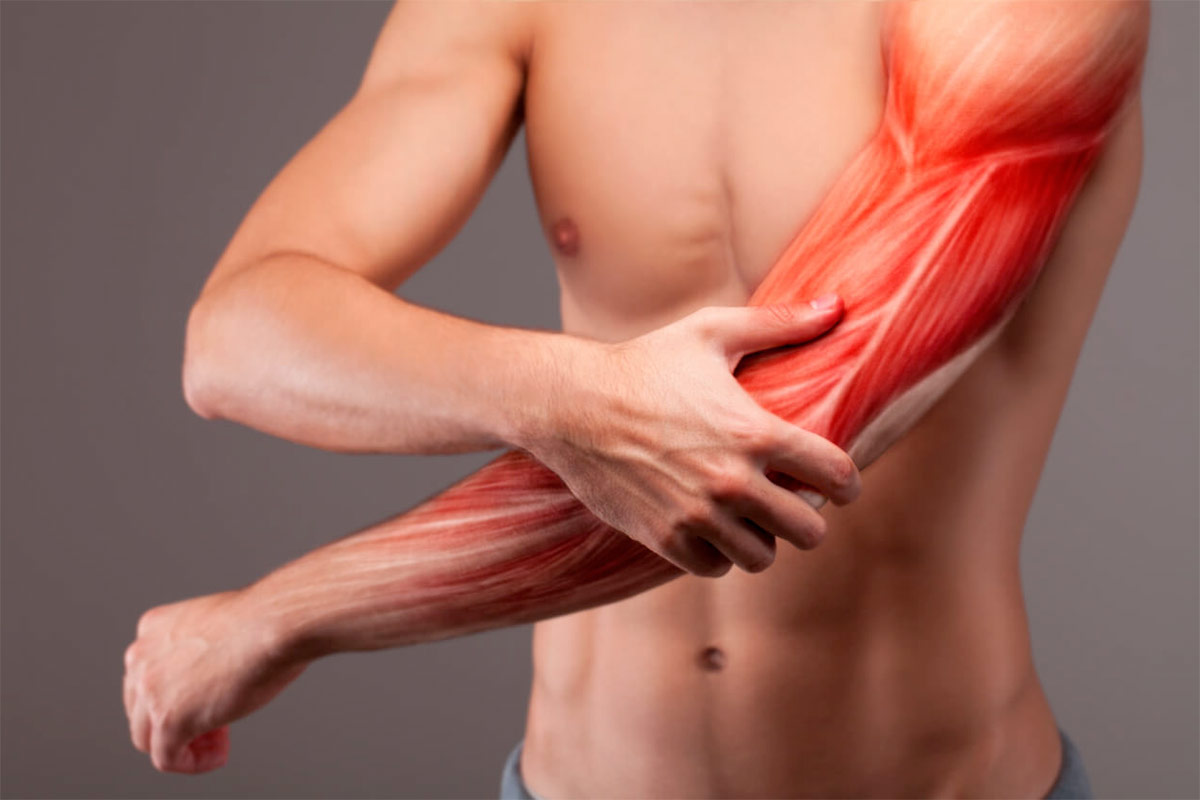
The link between lactic acid and muscle fatigue is not as straightforward as it is commonly believed. On the one hand, the characteristic burning sensation in the muscles 2-3 days after training is not associated with the accumulation of lactic acid – it is usually excreted from the body within a few hours.
On the other hand, lactic acid can still cause muscle soreness during exercise, especially for beginners and women. Moreover, its role is not always negative – in particular, lactate increases the level of growth hormone .
Lactic acid – what is it?
Lactic acid is a breakdown product of glucose and one of the typical substances in the body’s biochemical reactions. The reason it is formed in the muscles is the lack of energy – about 15-20% of the total amount of lactic acid is converted into glycogen.
Note that it is impossible to completely remove lactic acid – the body produces it during any physical exertion. Problems in the form of pain arise only when the level of exertion becomes excessively high – in this case, the body does not have time to process metabolic by-products.
Lactic acid got its name due to the fact that it was first isolated from sour milk – it is formed during the fermentation of sugars. From a chemical point of view, it is a carboxylic acid with three carbons, and its salts and esters are called lactate.
Role in the human body
The main types of energy for muscles are glucose and glycogen – products of carbohydrate processing. Glycogen accumulates in muscle tissue, and glucose circulates freely in the blood. In order to use glucose, the hormone insulin is needed – it is he who allows it to penetrate into the cells.
Since the lactic acid molecule is half the size of the glucose molecule, it is able to penetrate cells without the help of insulin – which makes it a source of the fastest energy possible. This is especially important in the case of high-intensity exercise, when the reserves of other energy are running out
Why causes muscle pain?
The more intensely an athlete trains, the more his body needs readily available energy – and the more actively the body produces lactic acid when processing carbohydrates. However, its excessive accumulation can cause a characteristic burning sensation and mild muscle pain, interfering with exercise¹.
About 90% of lactic acid is utilized within an hour after the end of the workout – that is, it is excreted from the body and cannot cause pain the next day. Despite this, lactic acid lowers the pH level in the muscles – which affects their biochemistry.
We also note that the higher the load and the lower the level of physical fitness of a person, the more lactic acid is produced – but the reason lies not in genetic differences, but in the body’s ability to accumulate (and use) a sufficient amount of glycogen.
Is pain related to weight gain?
Some athletes believe that lactic acid helps stimulate testosterone production – and use a specific training strategy to increase it. First of all, we are talking about pumping training and performing exercises according to the pyramid scheme or to failure.
This is partially true. High lactic acid levels and low pH do increase growth hormone production – but not in the amount that will fundamentally alter a beginner’s metabolism2. In other words, this technique is only suitable for professionals.
How to remove lactic acid?

Once again, we note that lactic acid is a typical substance for the body. In other words, it cannot be completely removed – it is always present in the muscles during exercise. The feeling of pain and stiffness is not caused by the lactate itself, but by the reaction to overly intense training.
Glycogen stores in muscles also play a separate role – lack of energy increases fatigue and provokes the production of lactic acid. If unpleasant sensations appear, it is recommended to stop training and give the body 30-40 seconds to recover – this will reduce pain.
How to remove lactic acid:
- pause for 30-40 seconds
- reduce exercise intensity
- devote the first 10-15 minutes of training to warm-up
- at the end of the workout, use the MPF video
How to reduce muscle burning?
If a burning sensation in the muscles appears after performing 5-7 repetitions of the exercise, then we are talking about increased production of lactic acid against the background of a lack of energy. Most often, this indicates a low amount of carbohydrates in the diet – in fact, the body does not have reserves of glycogen and glucose.
Research also suggests that the mechanisms for the production and utilization of lactic acid differ between professional athletes and beginners³. In fact, the longer the total training experience, the faster the human body removes lactic acid.



